ICHARM stands for the International Centre for Water Hazard and Risk Management under the auspices of UNESCO. The phrase "under the auspices of UNESCO" tells you that ICHARM works closely with UNESCO. ICHARM reads "I" as in you and I and "CHARM" as in a lucky charm.
The ICHARM logo uses three thin-moon shapes showing calm waters. Each of these shapes stands for a different organization. The top one is the Public Works Research Institute (PWRI) of Japan. PWRI is sort of a parent research center of ICHARM. The bottom one is UNESCO, looking like the letter "U". The middle one is ICHARM. The logo shows ICHARM's will to help people around the world by working out water problems in cooperation with PWRI and UNESCO.
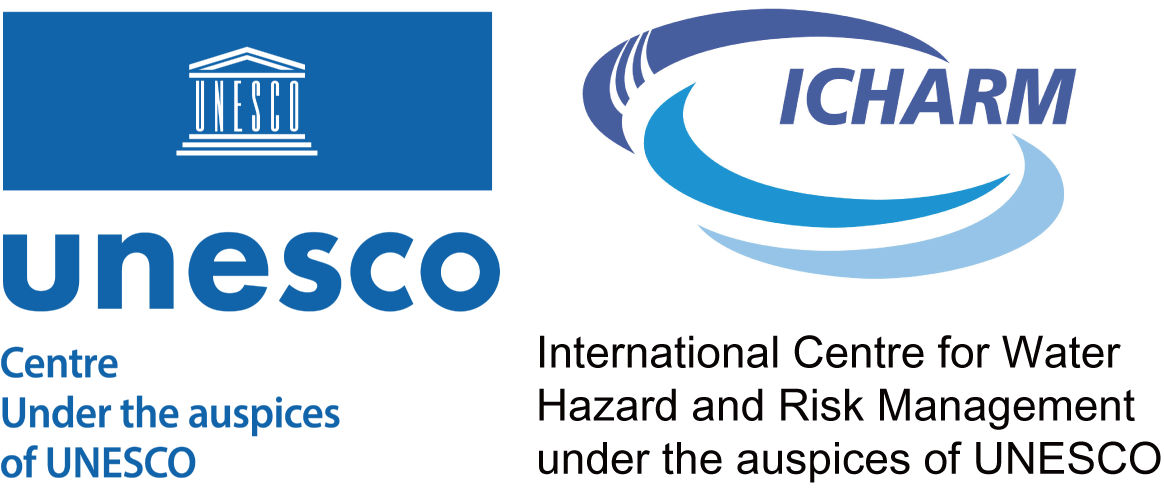 The ICHARM logo
The ICHARM logoWhen hearing water-related disasters, many people think of floods, mudflows or landslides, which often occur after a lot of rain. There are more, however. When people are short of water for a long time, that is called water shortage or drought, and these are also water-related disasters. When water gets too dirty because of, for example, wastewater from homes or harmful matters from factories, that is called water pollution, another type of water-related disasters. Tsunamis, rare but very powerful, are still another type. Water-related disasters can occur anywhere in the world and can cause serious damage to people's lives and livelihoods.
Water-related disasters like floods and landslides often occur in Japan these days. Japan is not alone, however. Many parts of the world suffer from them. Every year, more water-related disasters are reported in the world than any other type of disaster, and about half of them in Asia, where Japan is. Reduction of damage by water-related disasters is a very important challenge for the world to overcome.
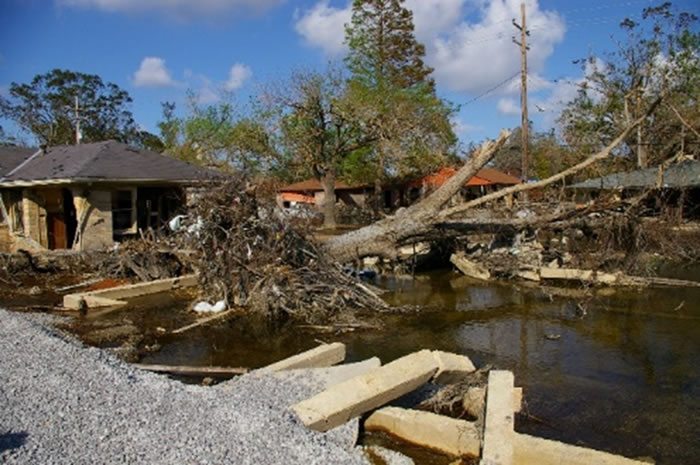 Flood damage to a US city by Hurricane Katrina in 2005
Flood damage to a US city by Hurricane Katrina in 2005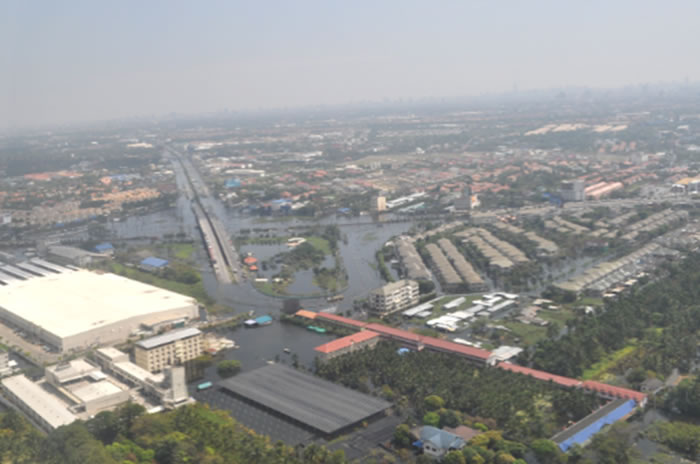 A flooded industrial park during the Chao Phraya flood in 2011
A flooded industrial park during the Chao Phraya flood in 2011"Risk management" may not sound very familiar to you. Risks are things that may hurt you in some way. Risk management is, simply put, to study risks, make plans to avoid them, and put the plans into practice.
At ICHARM, we first study risks using computers and other advanced tools by looking into which type of disaster may occur in which area, how it may occur, and what damage it may cause to what degree. Then, we plan what to do before and during a disaster to reduce damage as much as possible. Finally, we propose the plans and help people put them into action.
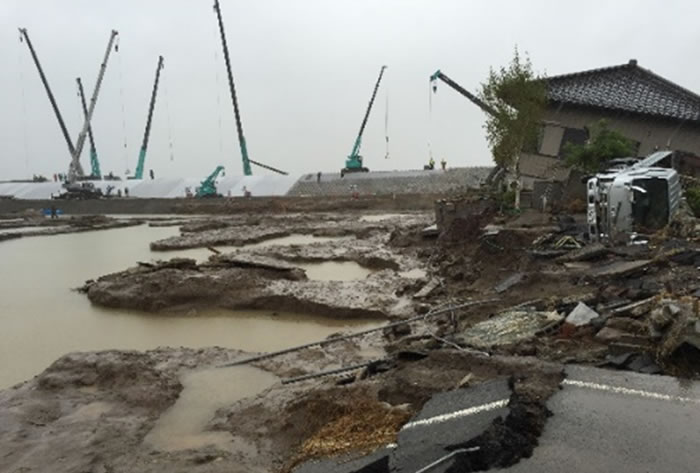 Flood damage resulting from a levee breach after extreme rainfall over the Kanto and Tohoku regions of Japan in 2015
Flood damage resulting from a levee breach after extreme rainfall over the Kanto and Tohoku regions of Japan in 2015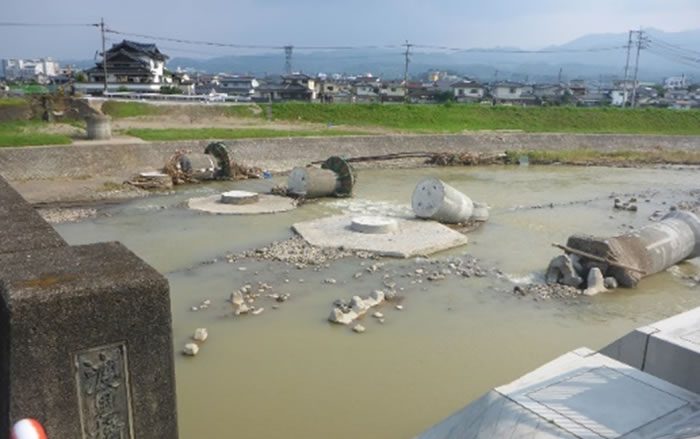 A railway bridge washed out during the northern Kyushu heavy rain in 2017
A railway bridge washed out during the northern Kyushu heavy rain in 2017When you hear UNESCO, you may think of protecting world heritage. But that is only a part of its job. UNESCO is short for the United Nations Education, Scientific and Cultural Organization, one of the United Nations organizations, based in Paris, France, to work for world peace through activities related to education, science, and culture.
The biggest reason that UNESCO was made was World War II. It started the operation on November 4, 1946, in the hope that there should never be war again. This strong hope can be found in the very beginning of the UNESCO Constitution, saying: "since wars begin in the minds of men, it is in the minds of men that the defences of peace must be constructed". From this phrase, you can tell how strong UNESCO feels about creating and keeping world peace and is trying to do its best to build the defences of people's minds against war through aspects closely related to people's lives such as education, science and culture.
As of September 2017, there are 195 member countries of UNESCO. Japan joined in 1951 as its 60th member. UNESCO was the first international organization that Japan joined after World War II, which shows that Japan knew the importance of UNESCO even then. In 1999, Mr. Koichiro Matsuura was elected to be the first Asian secretary general of UNESCO and served the organization for ten years until 2009.
The 21st century is called the century of water. As the global population is growing fast, the world has started worrying more and more about water such as ensuring access to safe water for everybody. UNESCO established the International Hydrological Program (IHP) in 1975 through which to organize activities to encourage different countries to work together to solve water problems. Gradually, people have acknowledged the reduction of water-related disaster risks as a common global challenge. Based on this shared understanding, UNESCO, as part of the IHP project, has opened research centers (UNESCO centers) around the world to address water problems. ICHARM is among them specifically studying the management of water-related disaster risks.
If you look at a map of Japan, you probably notice that Japan is very mountainous and people mostly live in lowlands around mountains. For this reason, when it rains a lot, rainwater from mountains runs down in steep rivers and can hit areas where people are. Floods and mudflows have repeated so many times for so many years. To overcome this problem, people in Japan have learned from the past disasters and came to have world-class knowledge and technology to cope with harmful events. Today, Japan is expected to help other countries reduce disaster damage by using such knowledge and technology.
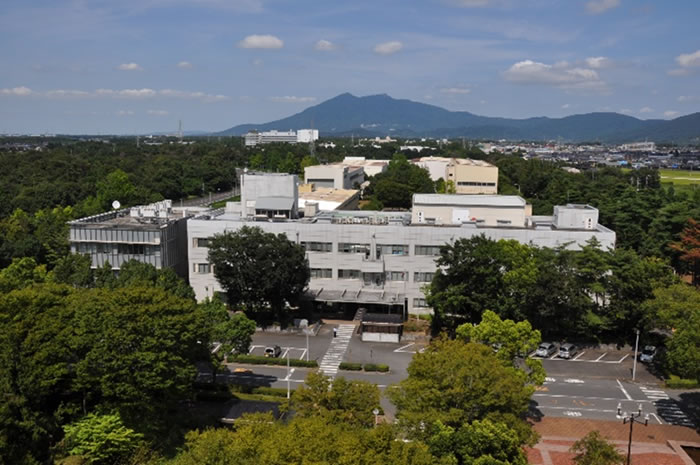 The main PWRI building and Mt. Tsukuba
The main PWRI building and Mt. TsukubaPWRI has been leading Japan's civil engineering research for about 100 years to improve the design, construction and management of large public structures such as river levees, dams, roads and bridges. In addition, PWRI has been studying and developing technologies to protect people's lives and livelihoods from water-related and other natural disasters.
PWRI's long-term experience and expertise in civil engineering have been a huge advantage for ICHARM, which officially started on March 6, 2006, in order to study technologies for the reduction of water-related disaster risks and assist countries often affected by water-related disasters in implementing the technologies so that people there no longer have to suffer damage from disasters.
 The signing ceremony for ICHARM on March 3, 2006
The signing ceremony for ICHARM on March 3, 2006 The official opening of ICHARM on March 6, 2006
The official opening of ICHARM on March 6, 2006Research is not the only job that ICHARM does. Training and information networking are also essential parts of it. ICHARM arranges training programs for government workers and experts of overseas countries to learn practical knowledge and technologies useful to reduce water-related risks. ICHARM sees information networking as essential for its work, too. The researchers attend many conferences, both at home and overseas, to share research outcomes and discuss issues with other experts, as well as to collect new information that can be used to improve ICHARM's activities.
ICHARM will continue, as it has, its efforts in the three principal areas of activity - research, training and information networking -, strongly hoping that they will contribute to the reduction of water-related disaster damage around the world.
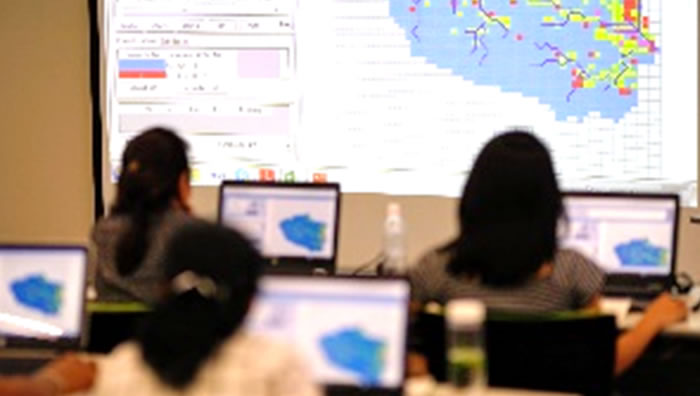 Training on the Integrated Flood Analysis System
Training on the Integrated Flood Analysis System A meeting on the Platform on Water and Disasters in Myanmar in May 2017
A meeting on the Platform on Water and Disasters in Myanmar in May 2017As you read in this page, ICHARM works together with people around the world to achieve an important mission to reduce water-related disaster risks worldwide. Please take a peek at other pages and find out more about us.